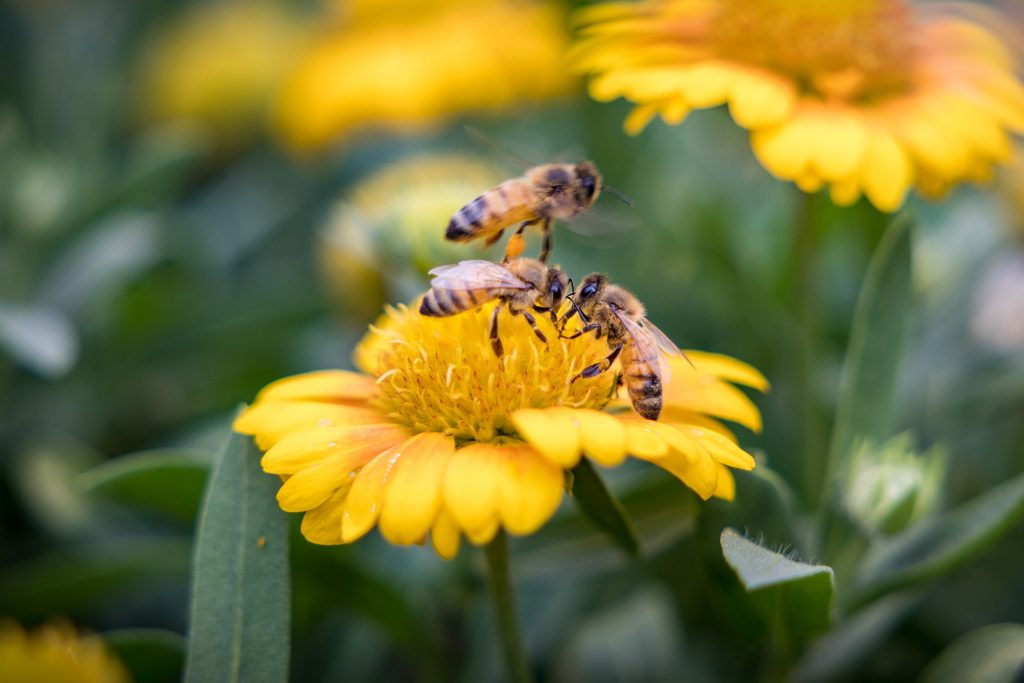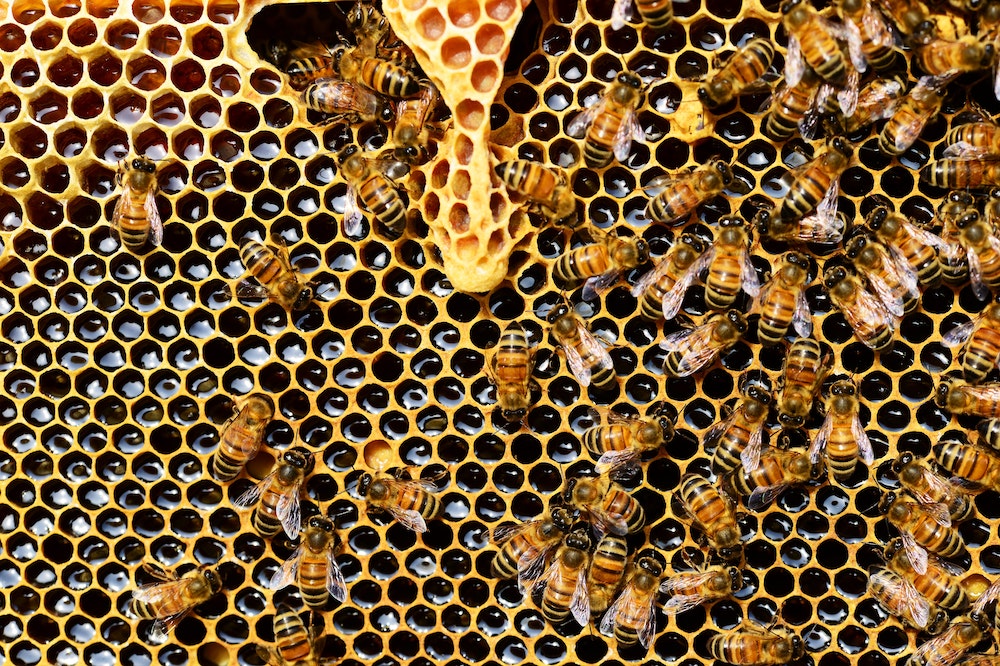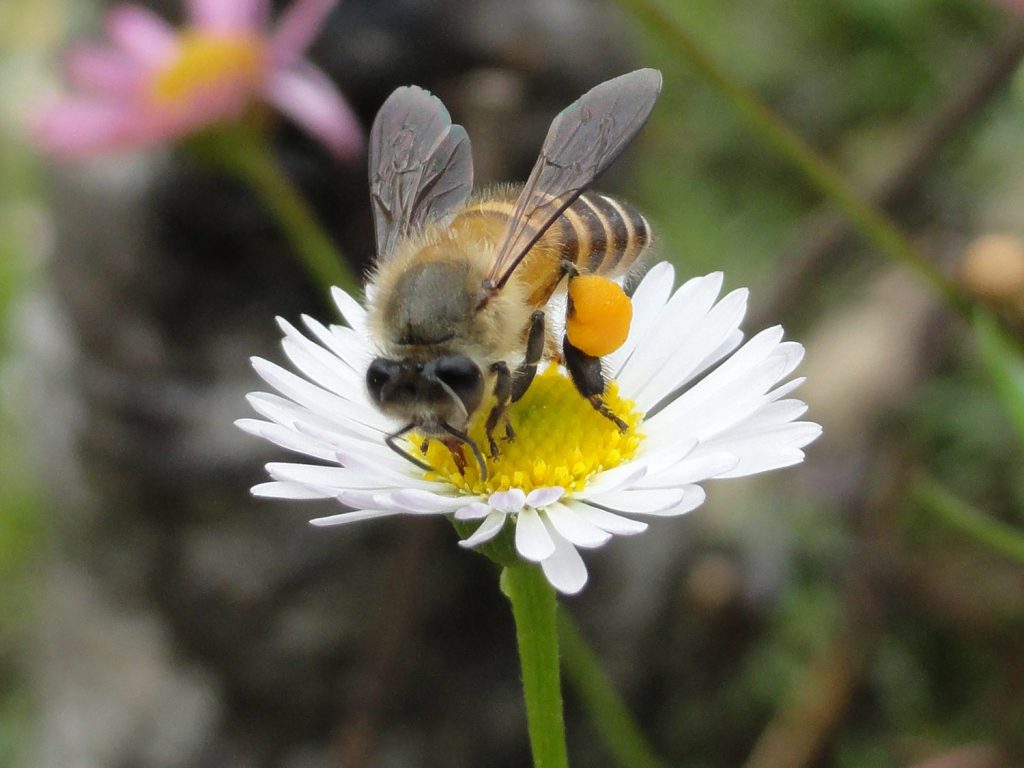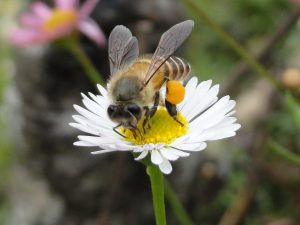
When bees forage for nectar and pollen, buzzing busily from flower to flower, they perform an invaluable service as pollinators. Remarkably, 75 per cent of the world’s food crops depend at least in part on pollinators such as bees, with honeybees particularly effective and reliable, according to a 2016 IPBES study. To put this into context, pollinators globally contribute to crops worth around USD 235 billion to USD 577 billion. This shows why protecting bees is important for a sustainable future.
We know how these social insects produce many commercially lucrative products such as honey, beeswax, and royal jelly. But bees as pollinators have even greater significance. The economic value of pollination for natural ecosystems as well as for food security and livelihoods is estimated to be far greater than the economic value of honey, beeswax, and other bee products.
Alarmingly, the IPBES study shares that over 40 per cent of invertebrate pollinator species – particularly bees – are facing extinction. Emerging climate change and anthropogenic pressures threaten bee populations across the world.
World Bee Day 2023 – with the delightful pun-based theme ‘Bee engaged in pollinator-friendly agricultural production’ – urges worldwide efforts to back pollinator-friendly agricultural practices. It stresses the significance of protecting bees and other pollinators, especially through agricultural production practices supported by evidence.
Emerging threats to bees
The Hindu Kush Himalayan (HKH) region, which spans eight countries, has a rich diversity of honeybee species and other pollinators. Of the nine honeybee species reported in the world, this region houses six species of honeybees. Of these species, only two can be reared in hives and managed for honey production and pollination. Four species occur in the wild, and honey hunters from local communities collect honey and beeswax from the nests of these honeybees.

However, protecting bees has become more important as climate change adversely impacts both bees and their habitats. Too much or too little rain, delayed or early monsoon, intense droughts, rising temperatures, and other climatic variabilities can cause flowering to shift over time and reduce the period of nectar and pollen availability for bees. These changes also lead to shorter flowering periods, longer gaps between flowering periods, and insufficient nectar and pollen for bees.
Similarly, the commercialisation of agriculture – with its increasing focus on monoculture and genetically modified or hybrid crops (which demand intensive farming practices such as chemical treatments) – has reduced the availability of useful floral resources necessary for protecting bees. The overuse or improper use of pesticides has direct links to bee mortality. Moreover, new races and breeds of bees are being imported without proper examination of bee health and suitability to the habitat. This has allowed the introduction of mites, new pests, and diseases, which have led to dwindling pollinator populations.
Reports indicate a sharp decline in native bee populations across the HKH region, which has severe consequences for agricultural productivity.
For example, the giant honeybee (Apis dorsata) is native to many low-lying areas of the HKH region. They have evolved to deal with severe infestations of Tropilaelaps mites, which feed on bee broods, through their centuries-old altitudinal migration. However, the introduction and large-scale farming of the non-native Western honeybee (Apis mellifera) in the plains has provided a year-round breeding ground for mites. This means that when the giant honeybees return to the plains in the winter, the mites are waiting for them.
Similarly, in mountain areas, such as in the Kaski district in Nepal, the population of the Himalayan cliff honeybee (Apis laboriosa) has significantly declined in the last few decades due to habitat loss and untimely honey hunting. Similarly, there are reports on the decline of wild bee populations in China, which is forcing farmers to pollinate fruit trees by hand.
It means protecting bees is more important than ever in all parts of the Hindu Kush Himalayan region.
Elevating the importance of bees as pollinators
Keeping in view the many roles that bees play in improving livelihoods and maintaining biodiversity, we need to take concrete steps for protecting bees and promoting good beekeeping practices.
The first step towards conservation and sustainable management is to create awareness about the importance of bees and to develop and effectively implement guidelines for protecting bees from harmful pesticides and insecticides. We need effective regulation to control the spread of diseases, the use of pesticides, and the introduction of new races or strains of hybrid bees.

For protecting bees, it is equally important to improve beekeeping standards and the yield of honeybee products by setting up selection and breeding programmes, quality assurance measures (from extraction and production to labelling and certification), and strengthening the link between inputs suppliers, beekeepers, processors, honey traders, and consumers.
For healthy bee populations, we need to promote organically managed areas around apiaries. This would mean shifting away from chemical inputs, ensuring that crop diversity is maintained, and growing bee-friendly (nectariferous and polliniferous) plants. For the conservation of wild bee populations, we could focus on the provision of foraging and nesting resources. In several European countries such as Germany, Portugal, and the United Kingdom, flowering hedges are grown around fields to inhibit the spread of pests through crops while also increasing the forage available to pollinators.
Such practices for protecting bees would be useful in the HKH region as well, where wild honeybees, particularly the Himalayan cliff bee, offer an opportunity for mountain communities to earn an income through honey hunting and bee-watching tourism.
Since bees create co-benefits for people and the environment, it is important to have dedicated government programmes and policies to provide incentives for beekeepers and others involved in protecting bees. The HKH countries could consider bees and beekeeping as agriculture inputs – much like fertilisers, seeds, or irrigation – and accordingly design subsidy and investment programmes. India’s Ministry of Agriculture and Farmers’ Welfare has already taken this step.
Countries should work towards raising awareness among local communities on the importance of bees as pollinators. Community-based conservation is crucial. Comprehensive national databases should be maintained on pollinator diversity, population trends, and contributions to pollination services. We also need greater collaboration among research institutions, extension services, and development agencies for the sustainable management of bees and other pollinators.
Governments often craft ambitious programmes to help the conservation of large animals – charismatic megafaunas such as tigers, rhinos, and elephants. But protecting bees – those tiny, buzzing creatures – is just as important for the livelihoods of different communities, the balance of our ecosystems, and the future of our nutritious crops.
























